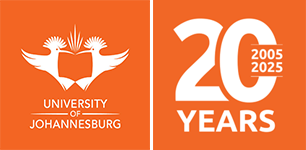About PACER
Home » Faculty of Health Sciences » Research Centres » SAMRC/UJ Pan African Centre for Epidemics Research – PACER EMU »NAME AND STATUS
“The SAMRC’s Extramural Units (EMU’s) are external research divisions commissioned to conduct research on its behalf. This research – which includes basic laboratory investigations, clinical research and public health studies – is undertaken by scientists employed by different South African and international science councils, medical schools, universities and research institutions that work with the SAMRC.). ” https://www.samrc.ac.za/research/extramural-research-units, accessed 15 April 2021
A further description of an EMU is provided below . The outcome of RFA (SAMRC-RFA-EMU-06-2021) on establishment of new EMU was received on the 24th February 2022 .
Pan African Centre for Epidemics Research (PACER) is not an independent legal entity. It is an integral part of the SAMRC and UJ. The final authority for PACER EMU is vested in the Board of the SAMRC and Council of UJ.
PACER RESEARCH AGENDA
In line with SAMRC EMU Guidelines (2020) PACER EMU research agenda will focus on conducting cutting edge epidemiological and public health research (including big heterogenous data, epidemiological modelling, biomedical, behavioural and clinical sciences) aimed at understanding and responding equitably and effectively to local epidemics (e.g. disease prevention, treatment modalities). The research involves assessing changes, trends and patterns in incidence of pandemics. Further, it involves examining context-specific parameters, shared determinants, heterogeneities of risk in disease transmission and acquisition across population groups (including marginalized populations) in the context of persistent health disparities to guide equitable response and to ensure optimal allocation of constrained resources in the face of competing health priorities. It also assesses, estimates and mitigates the direct and indirect impacts of pandemics (e.g. health service delivery disruptions) as well as explores lessons learnt from past pandemics to strengthen health systems and guide future pandemic preparedness. PACER EMU’s research agenda is underpinned by scientific excellence, public health significance, multi/inter-disciplinarity, innovativeness, local relevance as well as global competitiveness and impact. It will inform key service delivery adaptations and innovations; new models of care in pandemic times; strengthen infectious disease outbreak management systems and public health accountability mechanisms. It will also contribute towards improved health outcomes; reduction of excess morbidity and mortality and Sustainable Development Goals.
PACER Vision
The PACER EMU provides an opportunity to reimagine preparedness for and responses to future pandemics. It seeks to contribute to UJ’s mission/values: “balanced partnerships; transforming communities; serving humanity through innovation; collaborative pursuit of knowledge; commitment to community development; scholarship of teaching and learning; mentorship and career development of emerging investigators. The Centre will align with three of the four FHS research themes: Health Practice and Systems Improvement; Community Health Care; and Health Professions Education”
“Be the leading producer of cutting-edge scientific evidence for an equitable and sustained pandemic response in the African Continent”
PACER Mission
“The generation of cutting edge epidemiological and public health evidence for the equitable and sustainable response to local epidemics and future pandemic preparedness strategies in order to guide new models of health care, strengthen health systems, mitigate direct and indirect impacts, optimize post-pandemic resources and eventually improve quality of life for all.”
PACER STRATEGIC RESEARCH GOALS/OBJECTIVES
The SAMRC EMU Guidelines (2020) highlight key activities of EMUs which include: generating new knowledge; enhancing the leadership role of SA health research globally; publishing scientific articles in high-impact journals relating to the field of research endeavour, as well as chapters in books, authored books, technical reports, policy briefs and conference proceedings; contributing to human capacity development and transformation, through training postdoctoral fellows and the mentoring and graduation of postgraduate students; generating intellectual property towards new or improved products, processes, policies and practises”. The strategic research goals of PACER are aligned to SAMRC Guidelines (2020), include:
Generating new and robust public health and epidemiological knowledge on local epidemics using innovative methods (e.g. data platforms) and technologies where applicable (e.g. telehealth, remote patient care, machine learning, etc.) to establish a footprint and high-profile presence in the field
Strengthening multi-disciplinary long-term collaborations and partnerships institutionally, nationally, regionally and internationally
Contributing to developing capacities in the field and transformation, through attracting, and graduating diverse postgraduate students as well as training postdoctoral fellows
Increasing research opportunities for designated PACER staff to become future leaders in handling current and future pandemics through participation in projects, co-authorships, co-presentations, exchange programmes, fellowships, workshops, seminars, webinars, etc. memberships, supervisions, networks, mentorships, internships, focusing on transformation and succession planning
Disseminating research results through publications in high-impact journals, chapters in books, authored books, technical reports, policy briefs, conference proceedings, scientific presentations, stakeholder engagements, and media, using open access methods as far as possible
Designing and executing research with input from communities to ensure responsiveness, mutual interest, commitment, co-ownership and community development (engaged research) which will eventually enhance translation and uptake of research findings
Developing intellectual property towards new or improved products, processes, policies and practises where applicable
Generating external research income to address the afore-mentioned goals.
